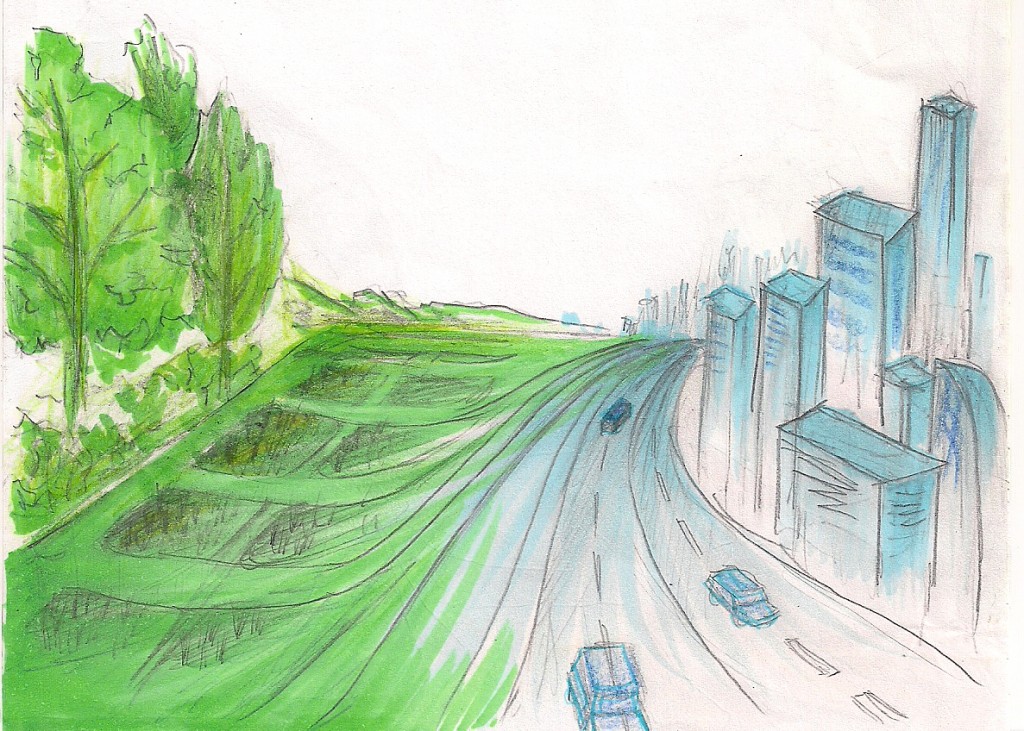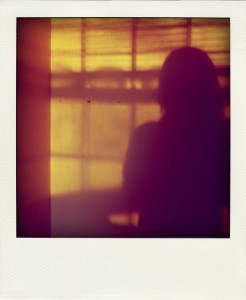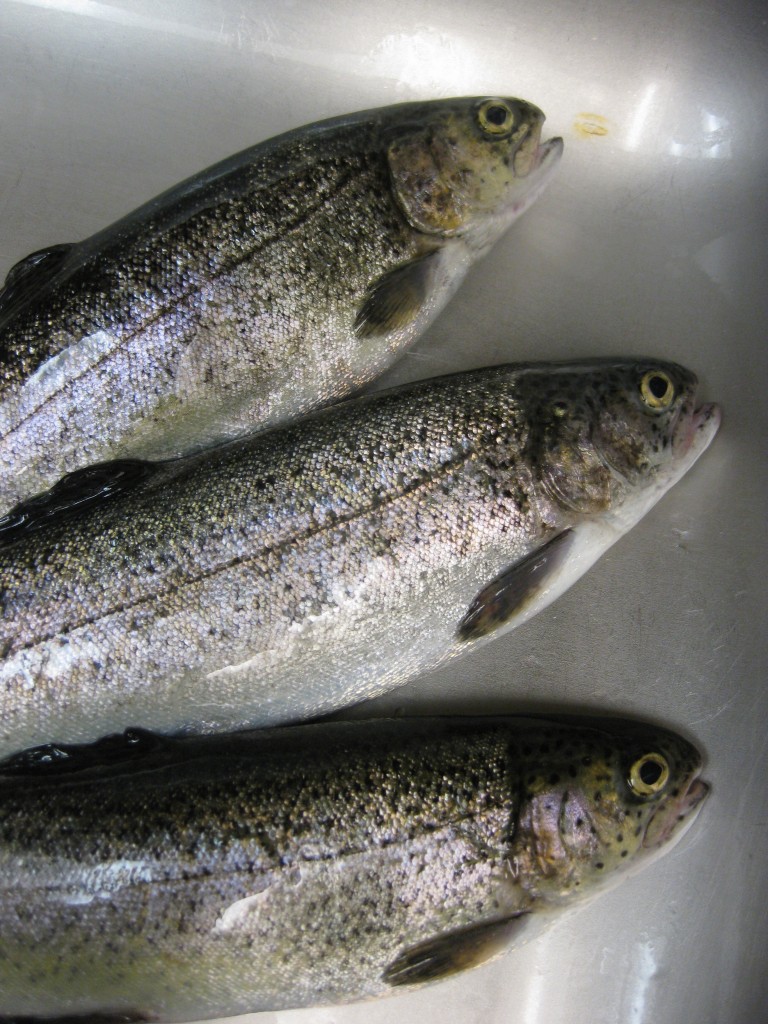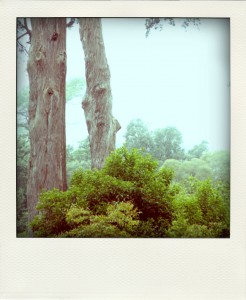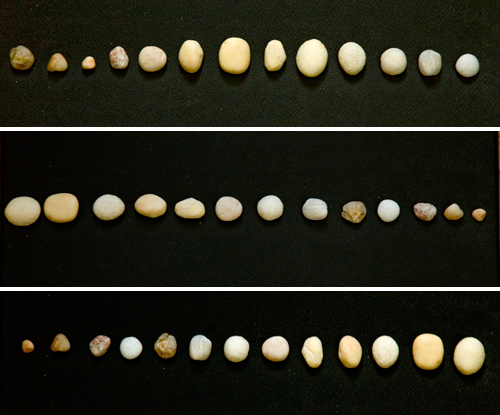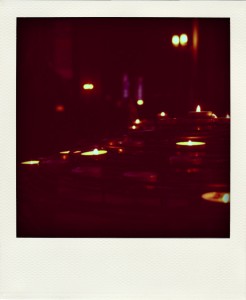
I am a Christian, and for the past two weeks, my church has been celebrating what’s known as the season of Advent—a period of anticipation in which we light a new candle every week (symbolizing hope, peace, joy, and love, respectively) as we prepare for the coming of the Christ child at Christmas. I’ve always loved Advent and think of it as a particularly beautiful tradition—somewhat akin in execution, perhaps, to other festivals of light like Diwali—because of the way in which the spiritual significance of Christmas (for me) is rendered concrete through the act of illumination. Within the Christian tradition, as in other cultures, light and illumination is a deeply important symbol: to light a candle is to enact, in a small, symbolic way, the illumination of the soul, and of the world—and to keep it burning is to remind oneself of the significance of that light; to say that such a light is worth preserving; to acknowledge that that light is a constant source of hope, peace, joy, love, and salvation, and that it is a beacon to which we can return again and again and again. One of the most well-known biblical uses of light as a spiritual metaphor comes from the gospel of John:
In the beginning was the Word, and the Word was with God, and the Word was God. He was with God in the beginning. Through him all things were made; without him nothing was made that has been made. In him was life, and that life was the light of all mankind. The light shines in the darkness, and the darkness has not overcome it. (John 1:1-5)
I love the way in which the writer of this passage intertwines different metaphors of illumination with the idea of language, of prophecy, of the Word. In the world of his metaphor, light is life, which illuminates in order to clarify and to sharpen the world so that we can see what is around is, and—most interestingly to me, light is with, and resides within, the Word. While the Word (with a capital “W”) is most directly being used here to refer God’s authority as manifested through scripture and in particular, through the fulfillment of certain Messianic prophecies from the Old Testament (in the form of Jesus), it also intrigues me to note that the writer has conceptualized the ideas of text, life, light, and salvation as entities which are seamlessly linked, so that the Word can illuminate; light can be life; the light can be in the Word; the Word can have existed from the beginning, and the Word can both be with, and in fact, actually be a facet of the identity of God. By no means would I ever claim that my imperfect human words (with a lowercase “w”) could ever match up to the (capitalized) Word in terms of spiritual authority or ability to illuminate; but it is intriguing to me as a writer to think that in some way, the metaphorical significance of text within Scripture is so seamlessly linked to the idea of bringing light, of illumination. Because—to take an associative (highly un-theological) leap—isn’t this impulse similar to the way in which we often speak of our daily practice of craft? While I don’t read this passage from John as an invitation to write (as given its context, that seems to be neither its immediate purpose nor its theological intent), I am reminded by it that words and text can indeed have a trenchant ability to illuminate and to clarify, to highlight important ideas for the reader, and to enhance and make those ideas seem more real, more accessible, more logically present, even more “true.” Accordingly, it seems imperative to me that as writers, we should act upon our particular responsibilities to illuminate through language not only so that we can render our own ideas and experiences more immediate, but also so that we can help to illuminate and “make real” the words of others.
This year at my church, I have had the opportunity to curate a series of “poems for illumination” for the season of Advent. Each week, I choose a poem that in some way addresses the idea associated with the candle that will be lit (for “Hope,” I chose a poem of Hopkins; for “Peace,” I selected Milton; for “Joy,” I’m using a poem by Michael Chitwood, and for “Love,” I’ll be sharing a piece by Denise Levertov), and include it, along with a short close reading / reflection, on a slip of paper that gets tucked into each of the bulletins for people to encounter as they look through the announcements or follow the order of the service. It has been a delight to have the opportunity to reflect simultaneously on poetry and scripture—the two kinds of text whose language have had the deepest influence on me, as a poet and as a human being—and a joy to be able to share, and to help “make real,” language from two genres that I often hear described as dense, inaccessible, or intimidating. In the Middle Ages, beautiful visual art and calligraphy was used to “illuminate” sacred texts; so why not poetry (especially since so much of scripture is poetry, in the first place)? I love the idea of light feeding light: of juxtaposing the imagery of one text with that of another in order to render both of their meanings richer and more resonant. To illuminate, beautify, to clarify, to make real, and to render true: aren’t these objectives at the very heart of what we seek to do every day as poets, as writers and readers of language?
Prompt: Write a poem that uses illumination as its central metaphor, or which meditates upon, or takes inspiration from, another text in order to illuminate or wrestle with its craft, meaning, or implications.
